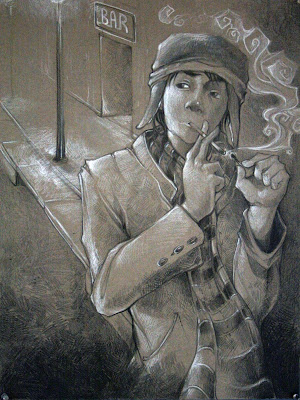Today I escaped the monotonous hours of listening to the same chapter of To Kill a Mockingbird in four consecutive class sessions. Today I…
Cut paper!
Today I….graded quizzes!
Today I…supervised lit. circles!

Today I realized, horrified, that 85% of an honors English II course did not bother to read the one chapter of To Kill a Mockingbird assigned over the weekend. Consequently, I realized lit. circles are a dreadful waste of time when hardly anyone has read the material. Instead of the higher order thinking and collaboration promised by all my teaching texts, I beheld the reality of one student summarizing the chapter while the rest frantically regurgitated the information to fill the required lines on their study sheet.
Team work meets reality. Scary.
Like every student teacher on the planet, I’ve read a lot of books on collaborative learning. I’ve written lesson plans where my future-teacher-self conducts a symphony of discovery among clusters of enthusiastic students. My file box has a section dedicated to different formats, methods, and handouts for guiding group work.
What college did not add to my idealistic file box was a battle plan for the moment I waded into those little clusters to supervise and guide their learning.
The class and I remain a little uncertain as to my status in the classroom. This immediately became apparent as I walked my rounds. The students felt no teacher-mandated need to shift their conversation back to the topic when I approached. In fact, the first group acted genuinely surprised when I asked them a question. As the hour progress I repeatedly beat my head against my limitations. For example, what do I do when a student offers a seemingly bizarre, unrelated response to a question and then asks, “Is that good?” My answer. “It’s a good start.”
And today was a good start for my teaching practice. Despite my struggles, I saw the “lights go on” in a group of students as I prompted them to think about their own experiences with marginalized groups of people like the Ewels in To Kill a Mockingbird. It was a glorious thinking. When I told them so, two of them exchanged a high-five.


















